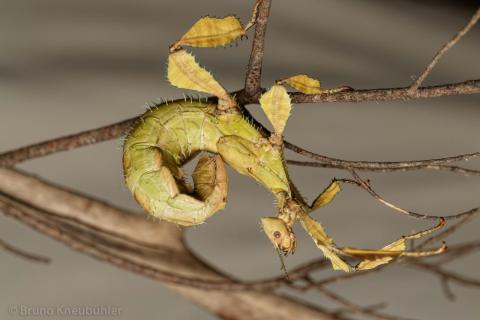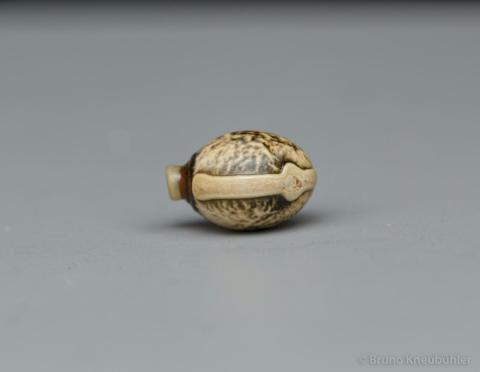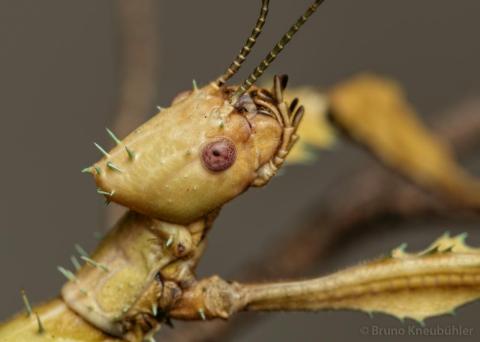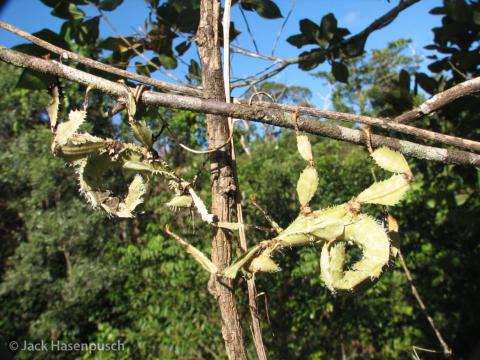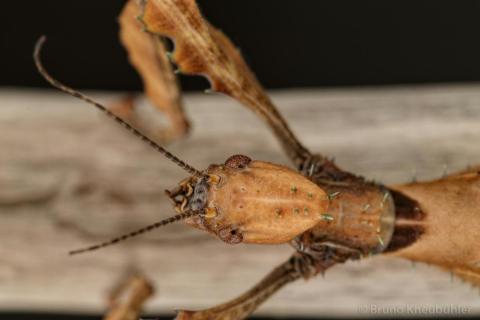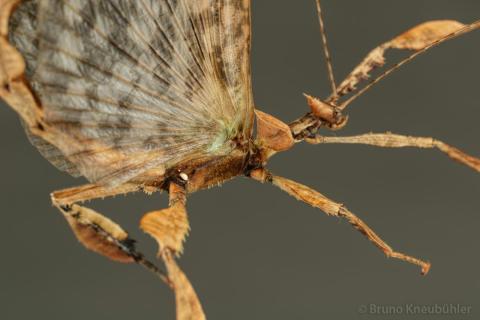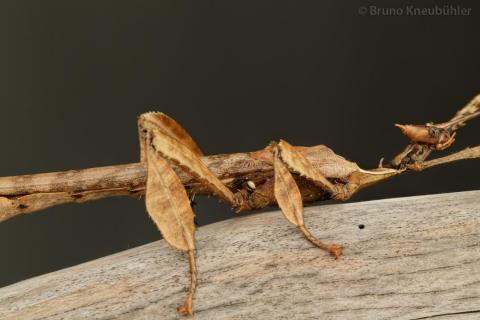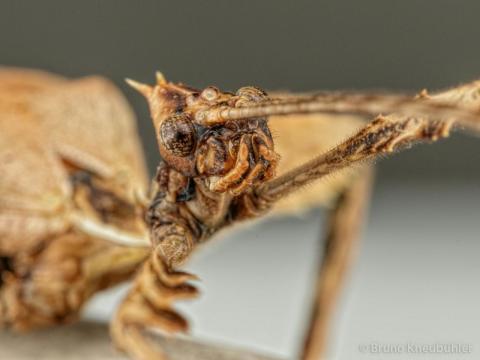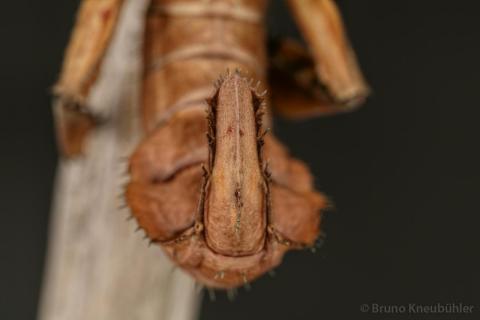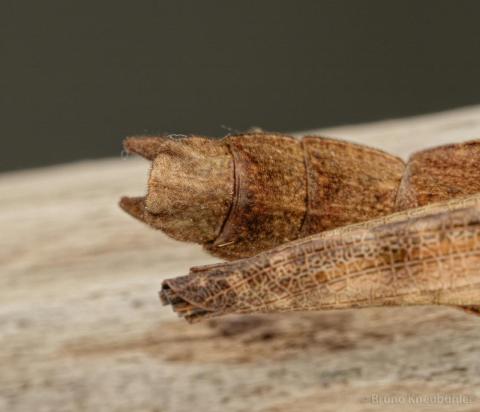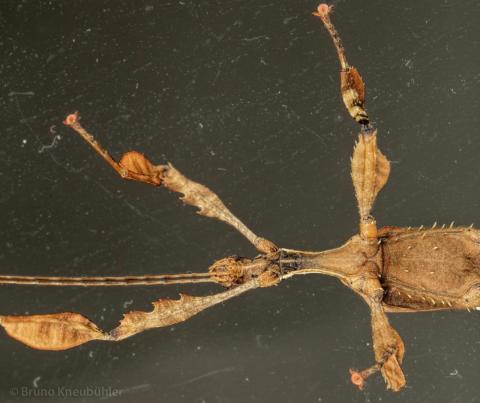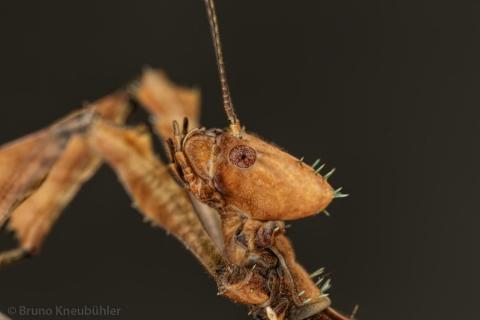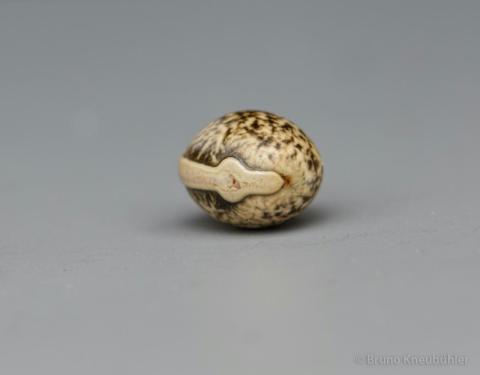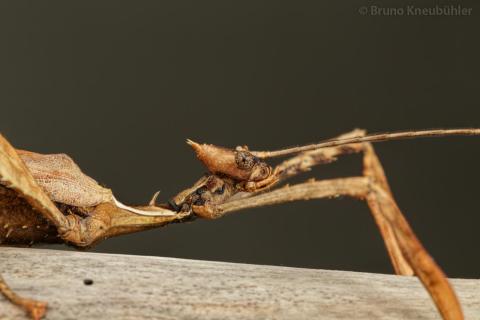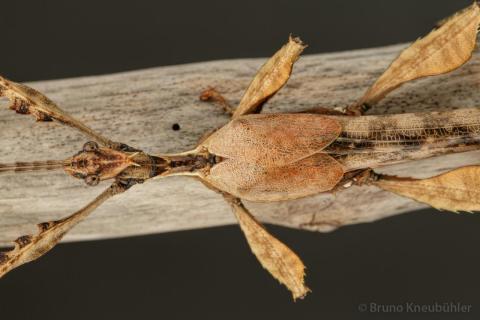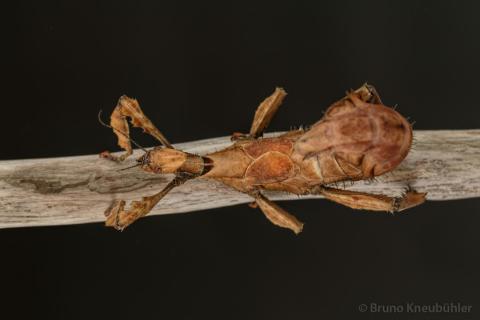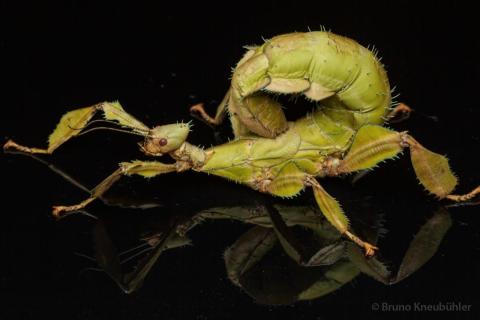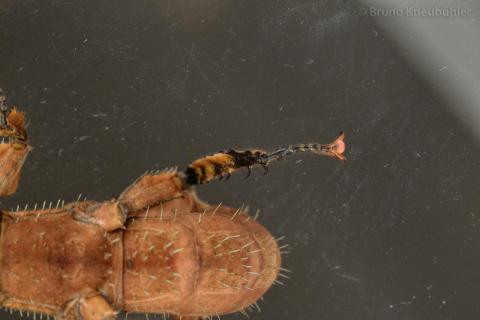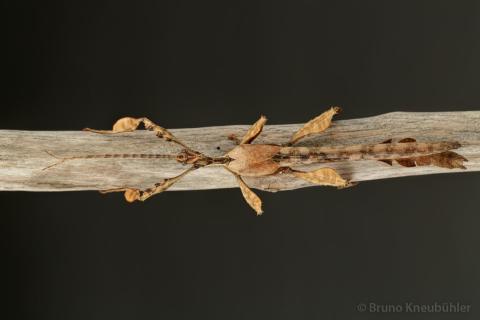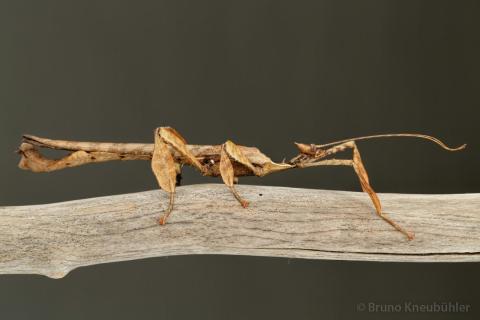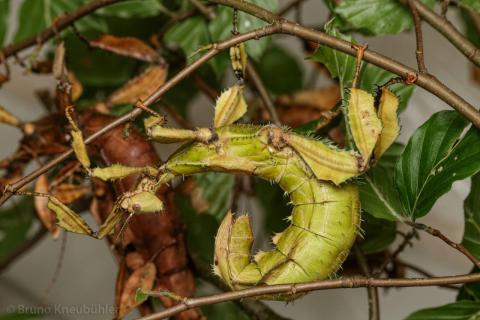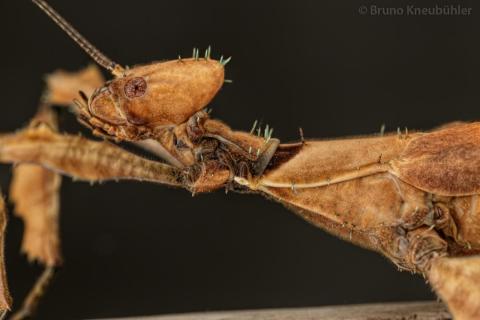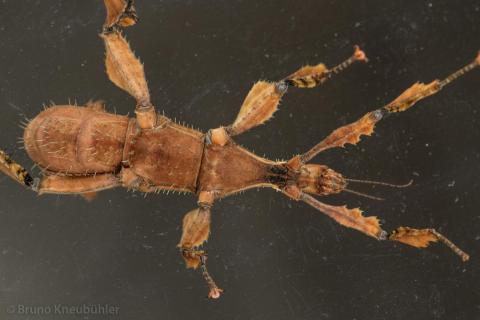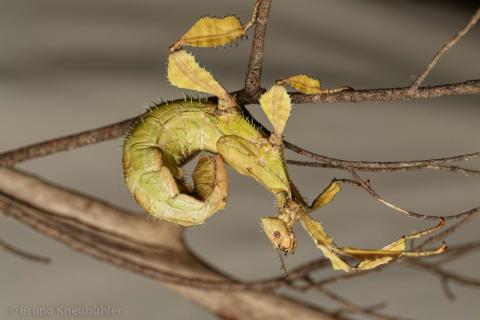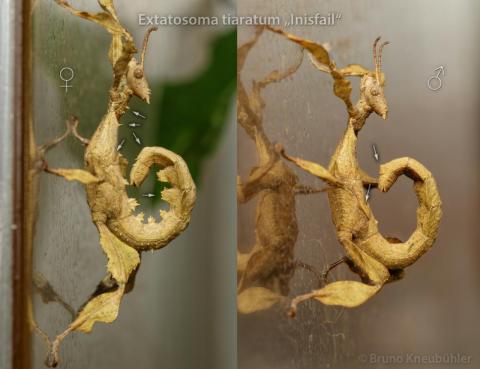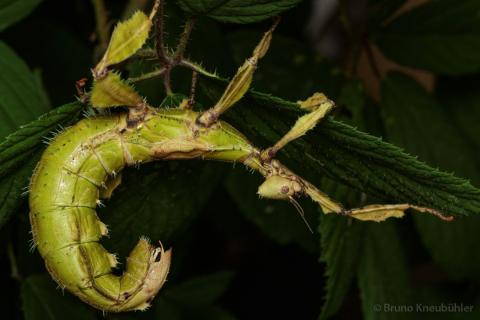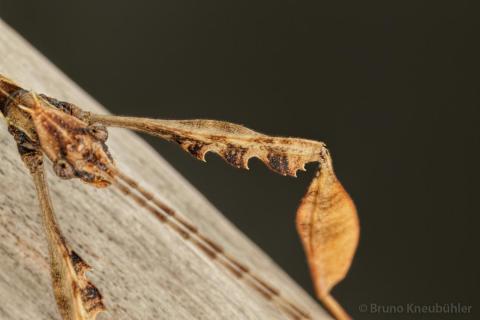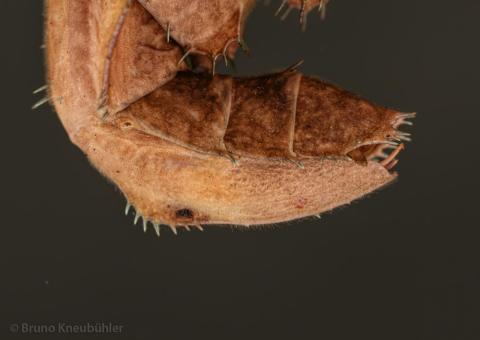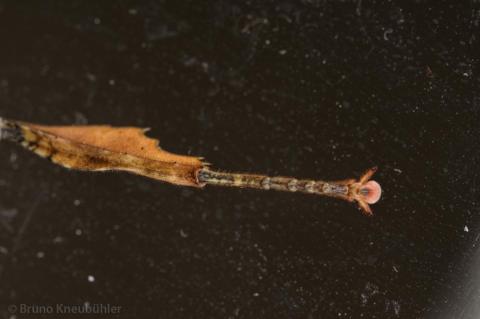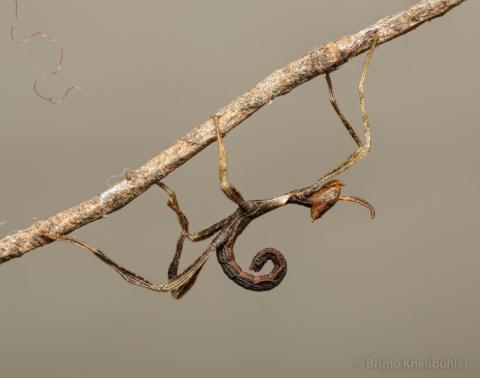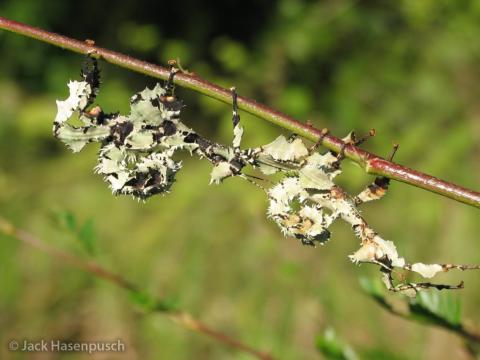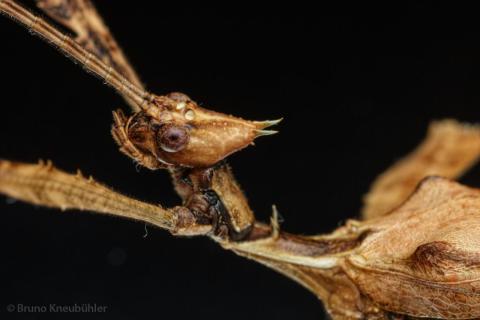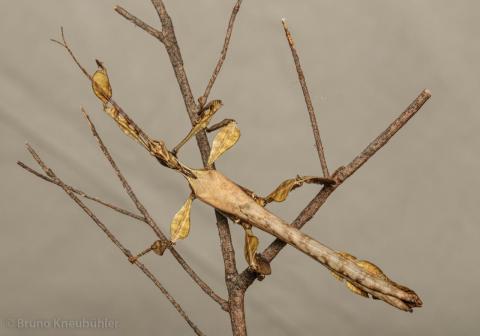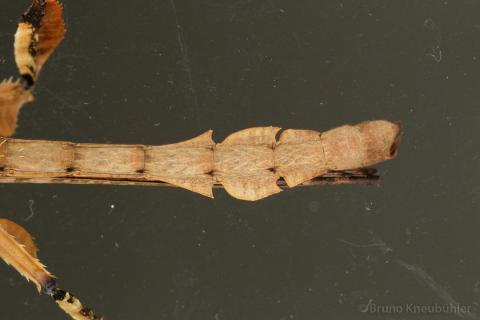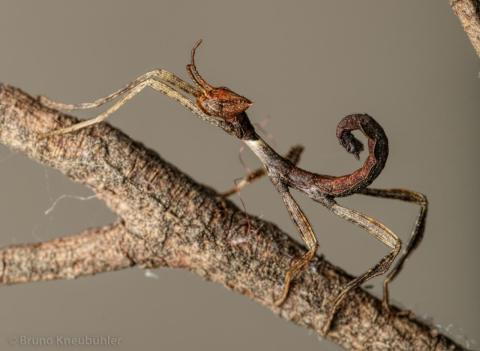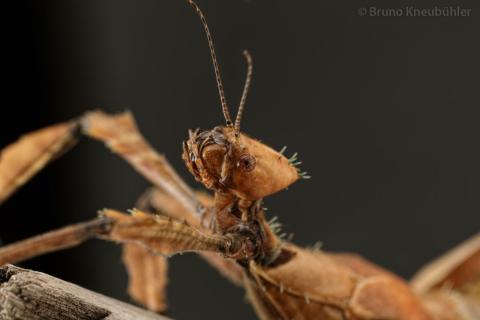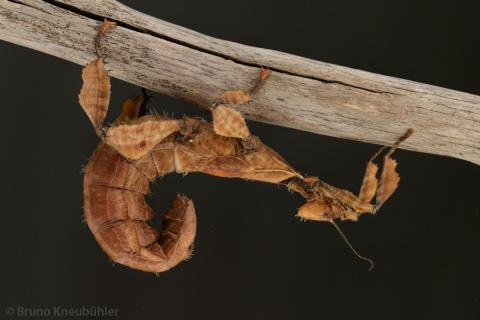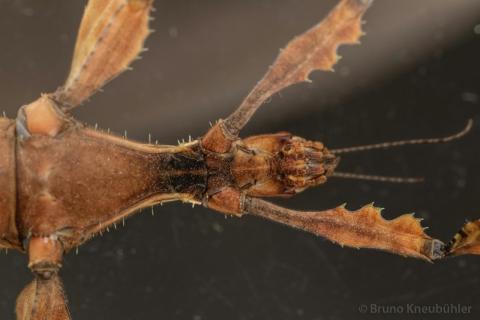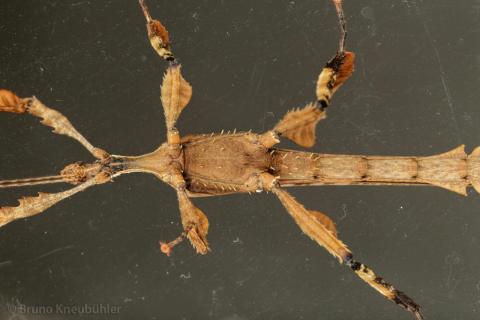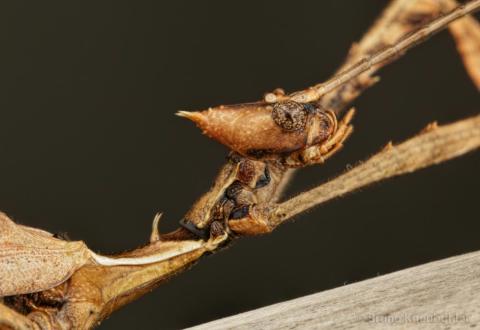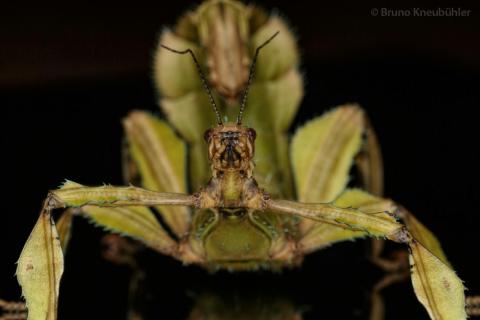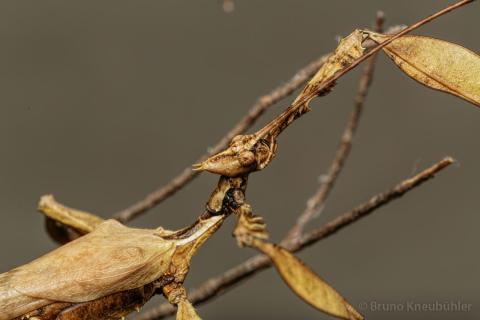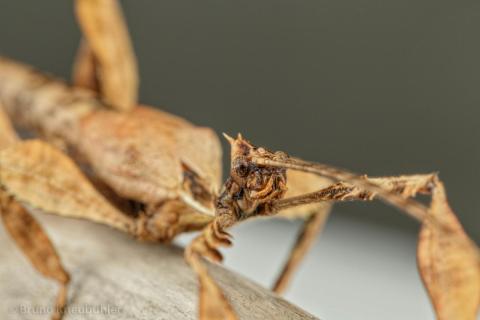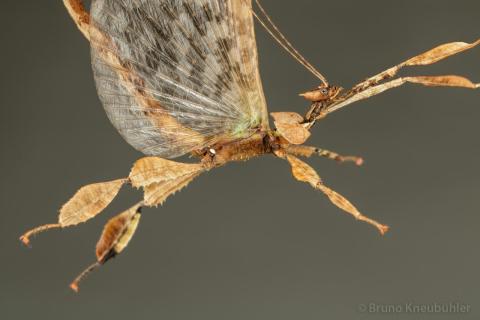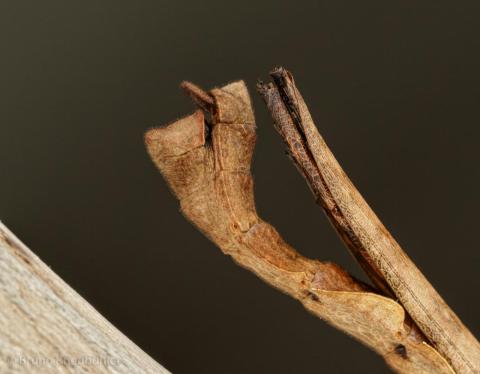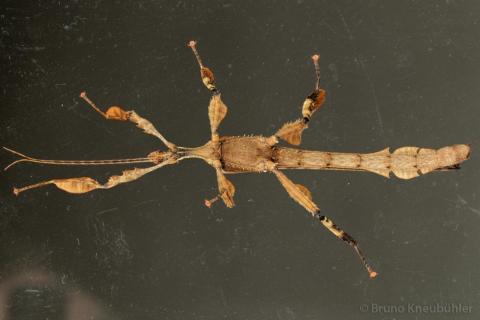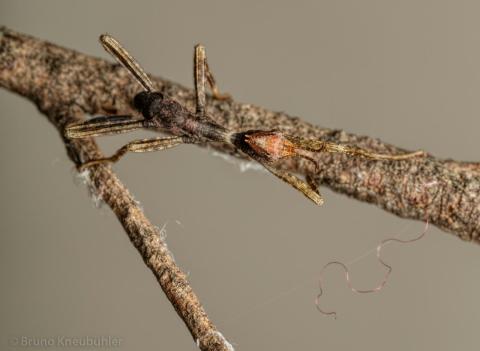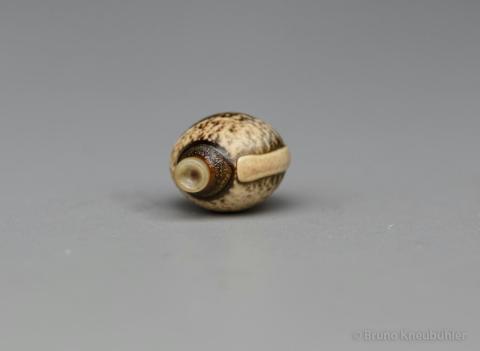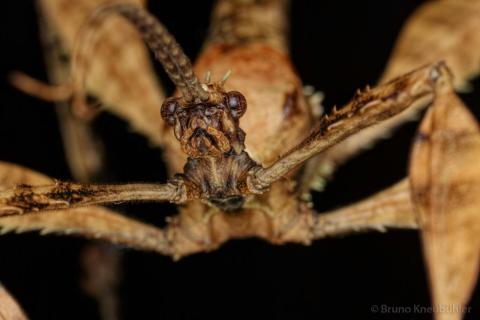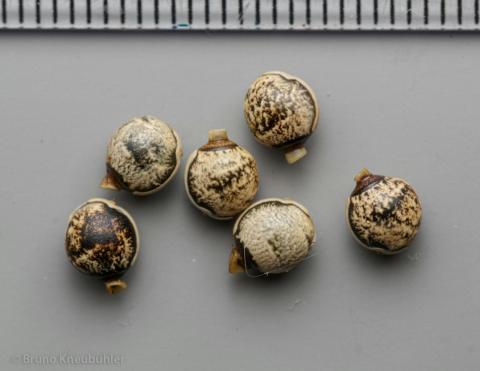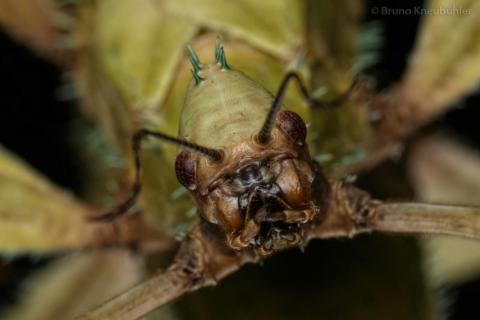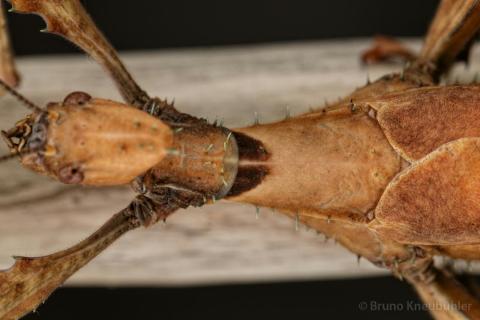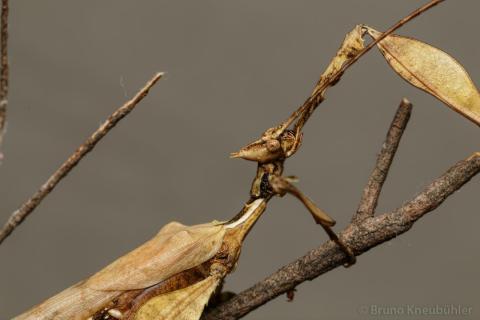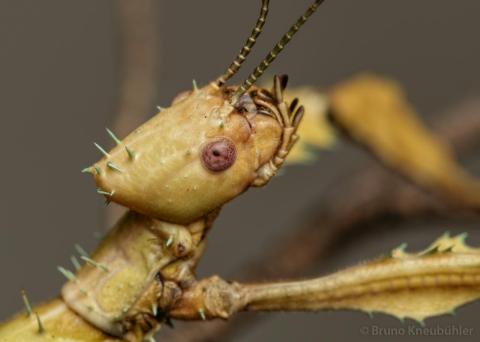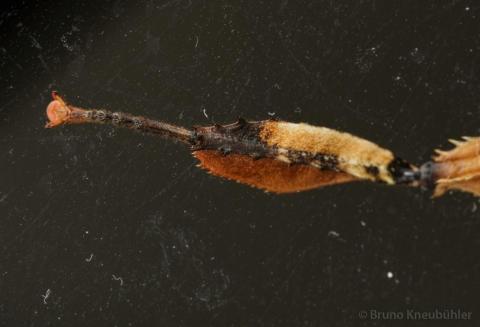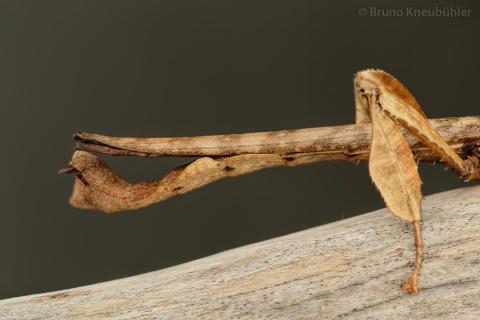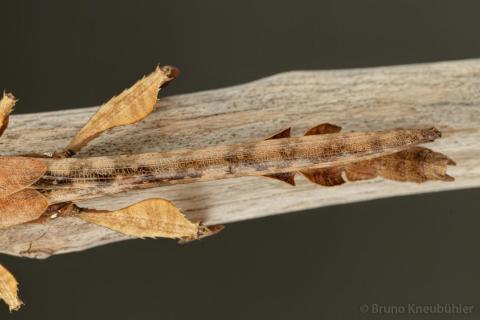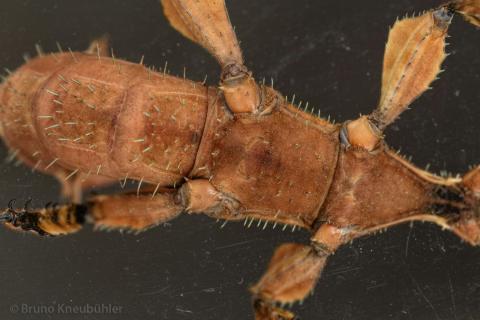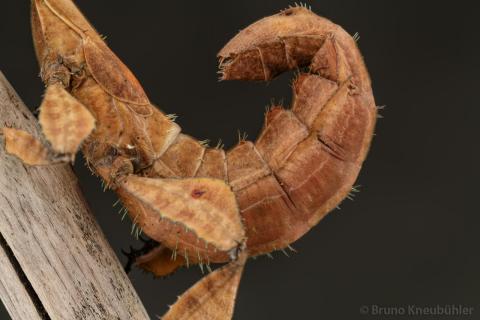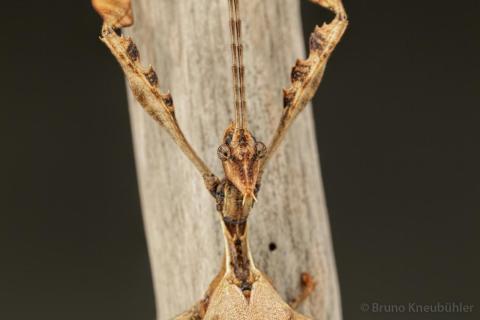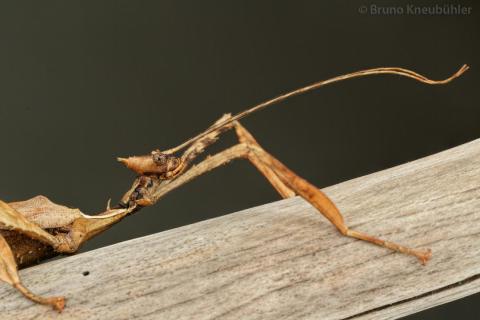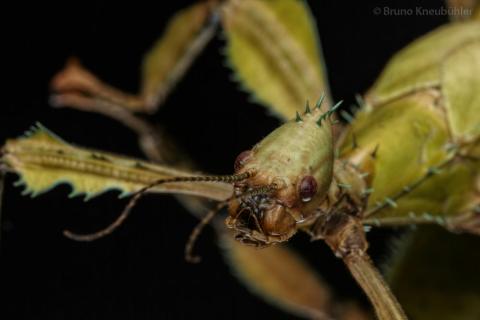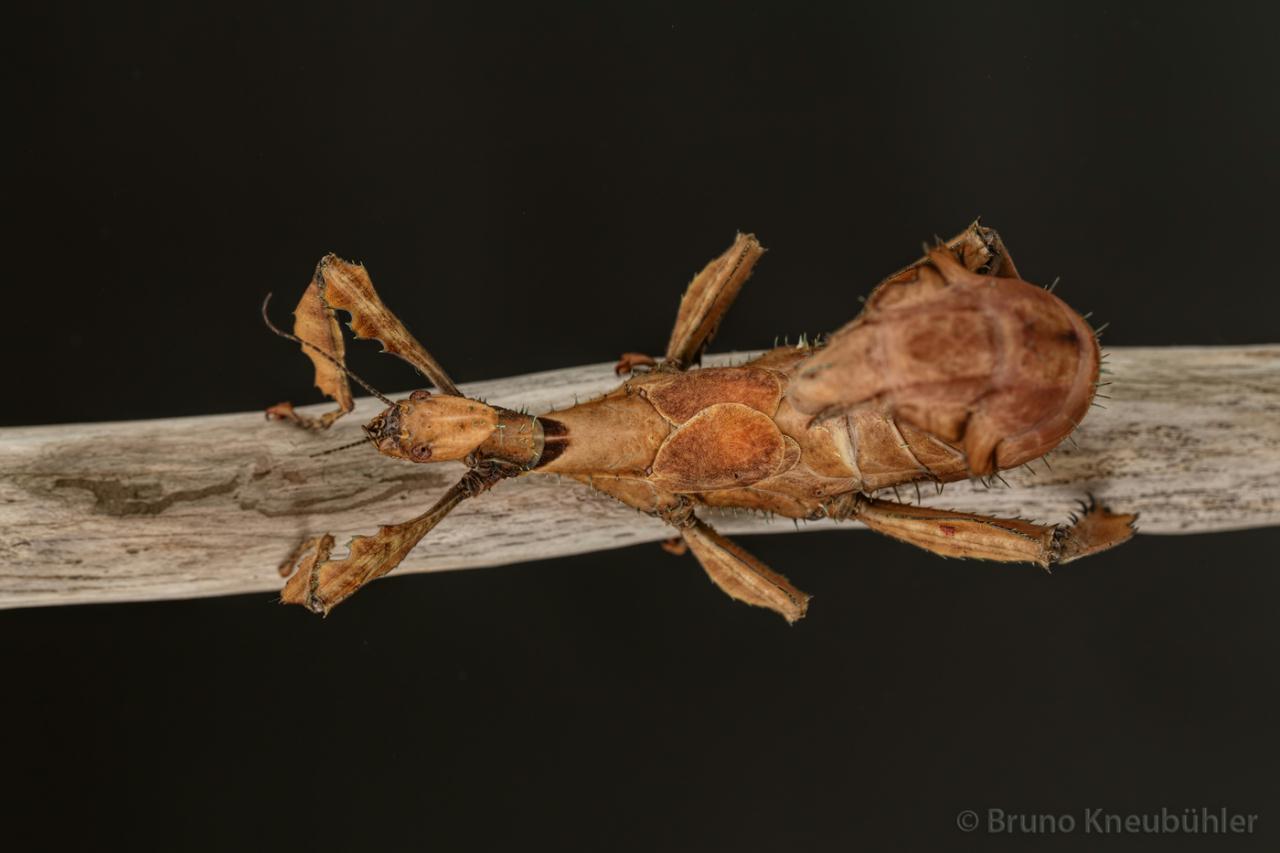
Genus
Species
Stock
CLP
664
PSG
9a
Culture status
In culture
Foodplants
Bramble (Rubus spp.)
Hazel (Corylus avellana)
Salal (Gaultheria shallon)
Eucalyptus spp.
Breeding notes
(by Bruno Kneubuehler)
General Notes
- Macleay described this species 1826 as Phasma tiaratum
- synonyms: Ectatosoma tiaratum, Gray 1835
- for further taxonomical informations → Phasmida Species Files
- Extatosoma tiaratum has been one of the first phasmid species to be bred in Europe, since the early 1960's
- over the years different strains of E. tiaratum from different proveniences have been imported, and unfortunatly non-serious and naive breeders mixed these up. Even though there are most likely more or less obvious differences between populations from different proveniences (especially when geographically well seperated)
- for the moment all Extatosoma populations of Australia are pooled in one taxa only - Extatosoma tiaratum. But future DNA-based studies will show whether are in fact different species or subspecies present in Australia
- the strain Extatosoma tiaratum „Innsifail“ is a pure culture, which should not be mixed up with strains of a different or even unknown provenience
──────────────
Culture History
- 2014 – pure culture Extatosoma tiaratum „Innisfail“ bred by Bruno Kneubuehler
- 2015 – distributed to other breeders as Extatosoma tiaratum „Innisfail“
──────────────
Origin
- Innisfail, Queensland, Australia
──────────────
Females
- body length about 12 – 14 cm
- but it is very difficult to accurately measure the length of the females, cause they always bend their abdomen upwards
- coloration different amonst females
- dark brown, reddish-brown, light brown and greenish females
- numerous, green spines on head, thorax, abdomen and legs
- short antennae
- short fore- and hindwings
- thumb-thick abdomen (when full of eggs)
- lateral, leaf-like, spiny lobes especially on the 5th and 6th abdominal segment
- strongly developed, leaf-like lobes on the legs
- subgenital plate about as long as the abdominal ending
──────────────
Males
- body length about 9 – 10.5 cm
- coloration is consistent amongst males
- few brown spines on head, thorax and legs
- antennae about as long as forelegs
- distinct ocelli (simple eyes) on the head
- well developed, long wings which reach almost to the abdominal ending
- lateral, leaf-like lobes on the 5th – 7th abdominal segment
- leaf-like lobes on the legs
- anal region of the hindwings (the membranous part) chequered light-dark
- a light-green area close to the hindwing joints
──────────────
Nymphs
- body length about 17 mm
- short, brown antennae
- dark brown with a light marking on the mesothorax
- by L3 it is quite easy to draw a distinction between ♀♂ (by the naked eye)
- examples on how to differentiate between male and female nymphs
──────────────
Eggs
- about 5 x 5 mm
- roundish
- strongly light-dark brown mottled
- some eggs are almost white, while few are almost black
- suface smooth and shiny
- distinct capitulum present on the operculum (lid)
- micropylar plate long and light colored
──────────────
Food Plants
- it is very much recommended to cut away the edges of the leaves for nymphs in L1
- regularly change the plants and the water in which they stand, if possible once a week
- bramble (Rubus spp.)
is very well accepted by nymphs and adults - hazelnut (Coryllus avellana)
is very well accepted by nymphs and adults - Salal (Gaultheria shallon)
is very well accepted by nymphs and adults - Eucalyptus
is the natural food plant of this species - more food plants are mentioned elsewhere, like oak (Quercus spp.), Guava (Psidium guajava)
- most probably a wide variety of food plants is accepted, especially by older nymphs and adults
──────────────
Behaviour
- freshly hatched nymphs are very active and run about a lot
- they settle down after some days, once they started to feed
- even small nymphs usually show the typical posture, the upwards bent abdomen
- older nymphs and adults are often passive during the day and out and about feeding at night. But some activity is also possible during daytime
- older nymphs and adults often drop to the ground when the feel threatened, but usually they freeze up after just a few step
- especially adult females try to clamp a potential predator with their hindlegs
- this species does not spray a visible spray from it's defensive glands on the prothorax. But a very specific odor can be perceived when handling these insects, which might originate from their defensive glands
- adult males can fly, but do so rather seldom
- matings are frequent and couples can stay together for 1 – 2 days
- females fling the eggs away - with a swing of the abomen
- eggs just drop to the ground
- eggs can crack if the hit a glass or similarly hard cage wall
──────────────
Developement
- incubation time (HH-incubation on slightly damp sand at 20 - 23 °C) is about 4 – 5 months
- the LTD-method (Low-Temperature-induced-Diapause) can be applied. An LTD-duration of 3 months at 8 – 10°C has been tested, and hatching ratio was high afterwards
- please note, that for phasmids it is not uncommon that some nymphs hatch a few or many months after the first nymphs hatched
- spread some dry spruce needles (Picea abies) over the eggs - this will make it much easier for the nymphs to hatch unscathed
- hatching ratio is usually high
- males will be adult after about 3.5 months (at 20 – 23°C), females after about 4 – 4.5 months
- females start laying eggs after about 3 weeks
- about 20 – 25 eggs per female and week
- adults can live for several months
──────────────
Breeding Notes
- my general notes on how to breed phasmids are an integral part of this care sheet
- it is recommend to keep each phasmid species in a seperate cage. The culture is much more likely to be successful than in an multi-species cage which are all too often badly overcrowed
- degree of difficulty = 1 (1= very easy / 5 = very difficult)
- keep nymphs seperate from the adults. This makes it much easier to monitor their developement and they are protected from being disturbed or even harmed by the much bigger adults (like during their moults)
- keep the nymphs in an airy cage
- a humidity level of about 60+ % rH (for nymphs and adults) seems to be fine
- nymphs can be kept in a Faunabox (or similar cages like Faunarium)
- move nymphs to a bigger cage as they grow bigger
- a cage of at least 30 x 30 x 60 cm height should be provided for 3 – 4 adult couples
- at least 2 (-3) cages are needed to breed this species – one cage for the small nymph, maybe another one for the older nymphs and one cage for the adults
- spray smaller nymphs with water 2 – 3 times a week (do not use chlorinated tap water). This water should dry up within a few hours
- it is not needed to spray older nymphs and adults, but it dosn't hurt either
- make sure that nymphs, which are about to undergo their adult moult, do not find places in the cage which would not offer them enough space beneath to moult successfully
